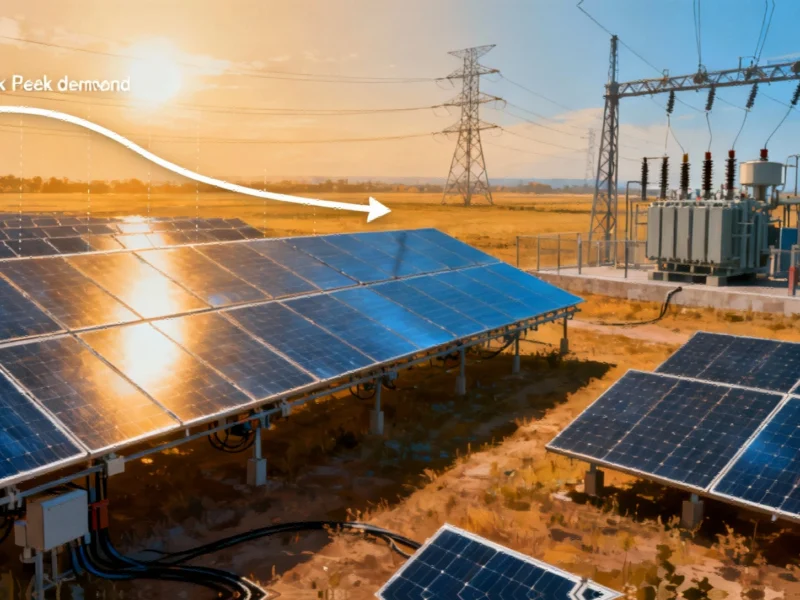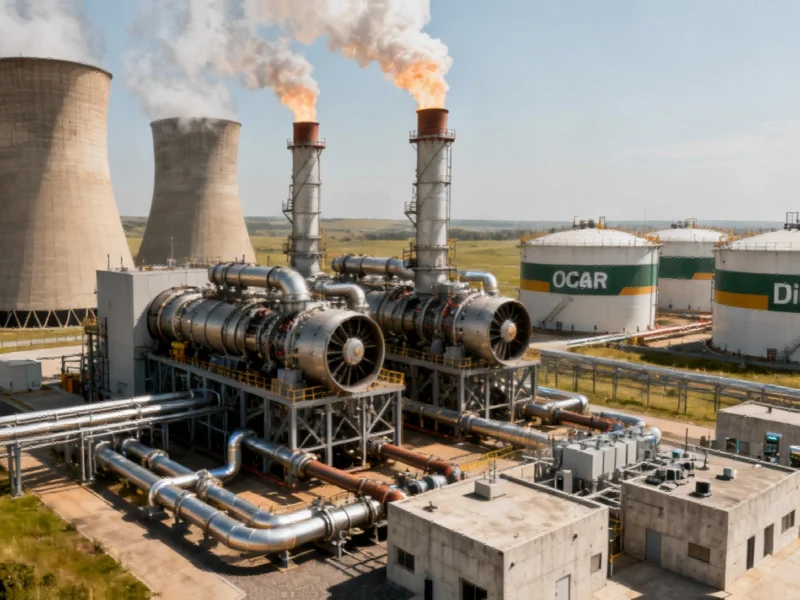TITLE: South Africa’s Industrial Sector Ignites Unprecedented Solar Power Revolution
South Africa is experiencing a remarkable energy transformation driven primarily by industrial adoption of solar power, with businesses installing twice the solar capacity compared to public power producers. This industrial-led revolution is reshaping the country’s energy landscape while creating new economic opportunities, as detailed in recent analysis of South Africa’s solar surge that highlights how corporate investment is accelerating the transition to renewable energy.
Industrial Solar Capacity Outpaces Public Sector
According to Dr François Rozon, senior researcher at Stellenbosch University’s Centre for Renewable and Sustainable Energy Studies, industry has installed an impressive 4 GW of solar generating capacity to date. This private sector achievement dwarfs the capacity installed by independent power producers for public consumption, demonstrating where the real momentum in South Africa’s energy transition lies.
“This is a major acceleration,” Dr Rozon affirmed during his presentation at the Solar & Storage Live Cape Town 2025 conference. “Right now, the economics are driving it.” The financial appeal is undeniable – companies are seeing payback periods for their solar installations in as little as two to three years, making solar investment not just environmentally responsible but financially compelling.
Grid Transformation and Peak Demand Reduction
The industrial solar boom is delivering tangible benefits to South Africa’s entire energy system. Dr Rozon revealed that peak electricity demand has dropped by 20% compared to just a few years ago, directly attributable to the widespread deployment of private solar power capacity.
This decentralized approach to power generation creates a dual benefit: local solar plants reduce vulnerability to grid failures while simultaneously strengthening the entire system when integrated properly. “When these local plants were integrated into the grid, it increased resiliency and made the whole grid much stronger,” Dr Rozon explained, highlighting how distributed generation creates a more robust energy infrastructure.
Regional Integration Challenges and Opportunities
While Europe demonstrates how interconnected national grids enhance resilience across regions, Southern Africa faces different circumstances. The current international transmission connection between South Africa and Namibia only permits one-way power exports from South Africa, despite Namibia’s development of major solar power plants.
Dr Rozon acknowledged awareness of plans to establish power import capabilities between the two countries, potentially allowing South Africa to access Namibia’s solar resources. However, the timeline for this crucial infrastructure development remains uncertain, creating both challenges and opportunities for regional energy cooperation that could mirror strategic market shifts seen in other sectors where companies reposition for optimal advantage.
Community Impact and Economic Development
The application of solar power extends beyond industrial uses to transformative community benefits. Across Africa, where electrification rates lag significantly behind South Africa, microgrids are becoming lifelines for rural communities. Though microgrid electricity typically costs more than grid power, for many remote areas it represents the only viable option for electricity access.
Dr Rozon emphasized how these systems can dramatically improve lives and stimulate local economies. He cited a compelling example from Kenya where microgrid electricity enabled a mobile grain processing unit to serve villages directly, eliminating the need and cost of shipping grain elsewhere for processing. This demonstrates how energy access can spark local economic development and create self-sustaining communities.
Cape Town’s Progressive Energy Policy
Closer to home, Cape Town is earning praise for its forward-thinking approach to energy management. The city’s policy of purchasing surplus solar power from industries is helping reduce overall energy costs while encouraging further renewable investment. This innovative approach to energy distribution reflects broader trends in technological advancement and strategic partnerships that are reshaping industries worldwide.
“I celebrate the fact that Cape Town is allowing these bilateral contracts,” Dr Rozon enthused. “I wish all municipalities would understand this. This, we need to see more of.” The success of this model provides a template for other municipalities seeking to harness the benefits of distributed energy generation while supporting local businesses.
Future Outlook and Economic Implications
The rapid adoption of industrial solar in South Africa signals a fundamental shift in how businesses approach energy security and sustainability. As companies continue to recognize the economic benefits of solar investment, the trend shows no signs of slowing. This energy transformation is occurring alongside broader market developments affecting global industries, creating both challenges and opportunities for businesses navigating multiple transitions simultaneously.
The combination of favorable economics, enhanced energy security, and environmental benefits positions solar power as a cornerstone of South Africa’s industrial future. As more companies join the solar revolution and municipalities adopt supportive policies, the country moves closer to a more resilient, decentralized, and sustainable energy system that benefits businesses, communities, and the national grid alike.
Based on reporting by {‘uri’: ‘engineeringnews.co.za’, ‘dataType’: ‘news’, ‘title’: ‘Engineering News’, ‘description’: ‘Engineering News Online provides real time news reportage through originated written, video and audio material. Each week, an average of 240899-page impressions are generated by over 64 719 online readers. ‘, ‘location’: {‘type’: ‘place’, ‘geoNamesId’: ‘993800’, ‘label’: {‘eng’: ‘Johannesburg’}, ‘population’: 2026469, ‘lat’: -26.20227, ‘long’: 28.04363, ‘country’: {‘type’: ‘country’, ‘geoNamesId’: ‘953987’, ‘label’: {‘eng’: ‘South Africa’}, ‘population’: 49000000, ‘lat’: -29, ‘long’: 24, ‘area’: 1219912, ‘continent’: ‘Africa’}}, ‘locationValidated’: False, ‘ranking’: {‘importanceRank’: 383187, ‘alexaGlobalRank’: 103084, ‘alexaCountryRank’: 1386}}. This article aggregates information from publicly available sources. All trademarks and copyrights belong to their respective owners.



